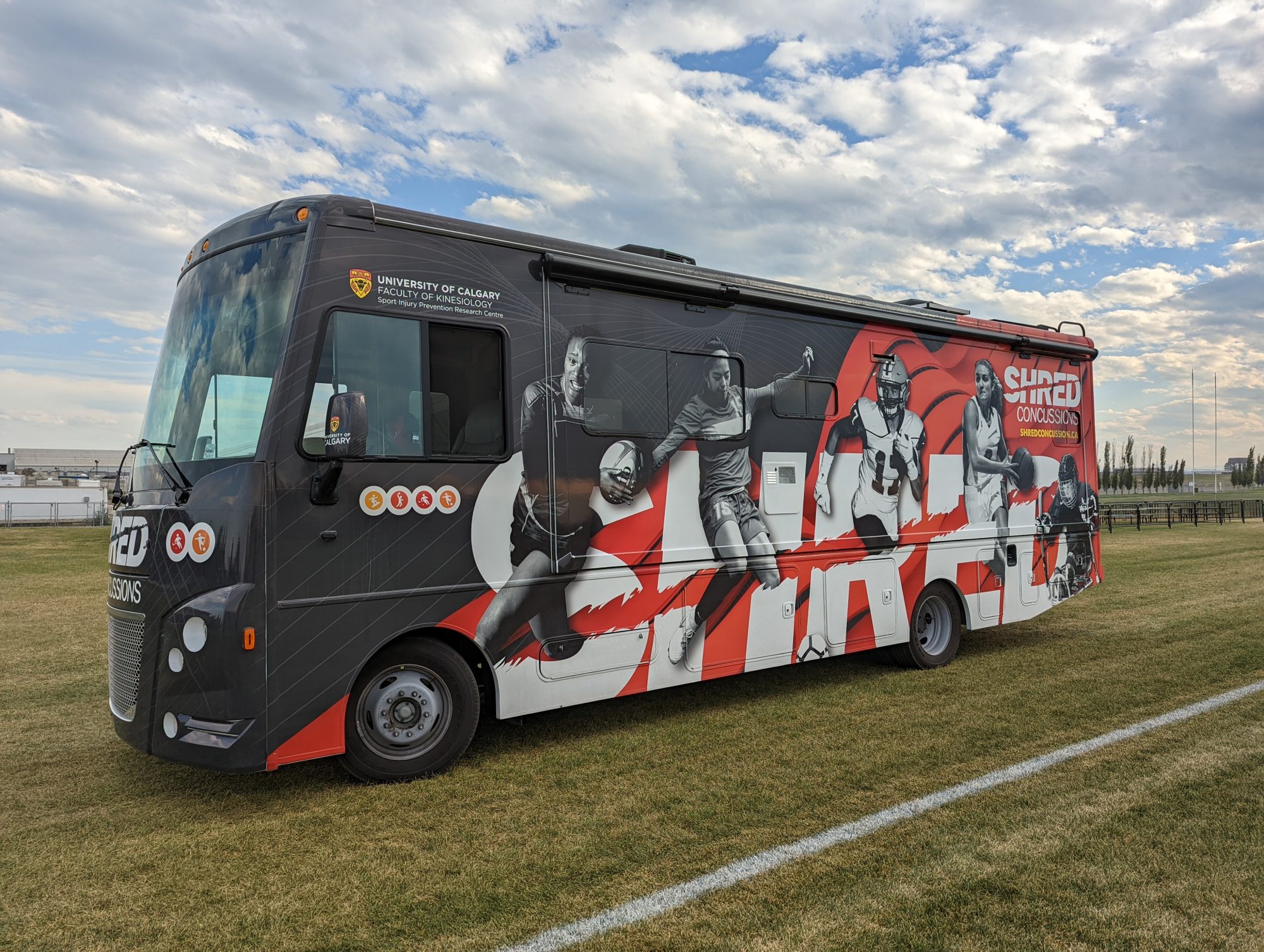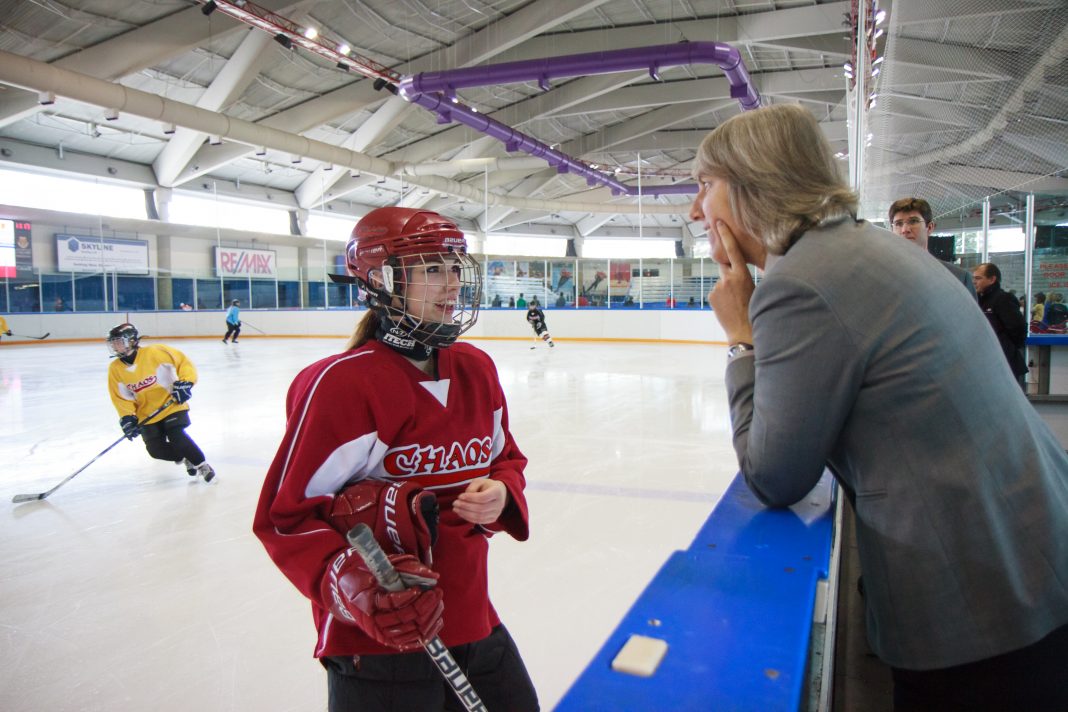Dr Carolyn Emery highlights injury prevention research in informing best practices and policies to reduce the burden of sport-related injuries and concussions in youth sports
Sports are a natural and beneficial part of childhood and adolescence and create some of the most lasting memories of childhood, including friends, successes, and experiences. Yet every day, youth are at risk of sport-related injury, often without being aware of the risk or the strategies that could protect them.
Unintentional injuries are the leading cause of disability in youth (ages 10-19), with >50% sport-related.(1) One in 3 youth will seek medical attention for a sport-related injury and 1 in 10 for a concussion each year.(2) Injury leads to reduced physical activity and increased risk of chronic disease and obesity, which has risen ~20% in the past decade.(3)
Consequences of injury may include post-traumatic osteoarthritis, persistent post-concussive symptoms, functional deficits, mental health impact, and economic costs.(4) A significant paradigm shift from the current focus of managing health away from treatment and towards prevention is critical to improving the health and quality of life of all youth.
Prevention is the best medicine, and evidence-informed primary injury prevention solutions can ensure lifelong sport participation and all the associated health benefits. Promoting a healthy and active future for youth through sports injury prevention research and knowledge translation will reduce the public health burden of sport-related injuries and their consequences.
The Sport Injury Prevention Research Centre (SIPRC) at the University of Calgary is one of 11 International Olympic Committee Research Centres for Injury Prevention and Protection of Athlete Health.
The vision of SIPRC is the elimination of injuries and their consequences that prevent youth from lifelong participation in sport. Strong epidemiological approaches, validated injury surveillance methods (i.e., SHRed Concussions – Surveillance in High Schools and Community Sport to Reduce Concussions/Injuries), and transdisciplinary collaboration (e.g., biomechanics, physiology, psychology, sport-medicine, physiotherapy) are core to the evaluation of novel, effective, and sustainable primary injury prevention strategies.
Strategies may include sport policy/rules changes, training interventions, personal protective equipment, and wearable technologies.
In Canada and many other countries, some of the most vulnerable youth live in rural and Indigenous communities and/or with disabilities. Injury prevention research and evidence-informed programs should also reach these communities as done using the SHRed Mobile to engage all vulnerable youth communities.
Sports rules/policy changes to reduce injuries
While ice hockey is one of the most popular winter sports in many countries, the burden of injuries and concussions is high in young players.
Evidence-informed policy change disallowing body checking in games in 11-12-year-old leagues in Canada and the USA was based on 4-fold higherrates of concussion in leagues allowing body checking.
Prospective evaluation of this national policy change confirmed a >50% reduction in injury and concussion rates (translating to >8000 injuries saved annually in Canada).(5) Further, body-checking policy changes in adolescent (13-17 years) non-elite leagues have had a similar impact.(6)
This research informs evaluation of policy/rule changes aimed to reduce injuries in other youth collision sports (e.g., tackle football, rugby union, lacrosse), including reduced contact practices, level of the tackle, and age of implementation of collision techniques (e.g. tackle) in competition.
Training strategies to prevent sports injuries

SIPRC research has focused on the evaluation of neuromuscular training (NMT) warm-up programs (including balance, strength, and agility components) for >20 years. NMT warm-ups effectively reduce injury rates by >35% in youth team sports with significant healthcare cost savings.(7,8) A 46% lower injury rate was also found for girls when NMT was introduced in physical education classes.(9)
The effectiveness of such programs in reducing concussion rates, specifically in youth sports, is promising, and evaluation is ongoing. Other training-related strategies include modification of training load during rapid growth periods for youth, reconsideration of early sport specialization, and grouping youth athletes based on growth and development rather than chronological age.
Training approaches to reduce head impacts and weekly training loads for youth are also being evaluated. Tackle training strategies to optimize tackle proficiency and reduce injury rates are also a key focus in tackle-related youth sports.
Personal protective equipment and wearable technologies
Personal protective equipment (e.g., mouthguards, helmet fit) and wearable technologies (e.g., jump load monitoring and instrumented mouthguards with video analysis) can play a significant role in injury prevention in youth sports.
For example, we have demonstrated the effectiveness of mouthguards in reducing the odds of concussion by 58% in youth ice hockey players.(10) Combining wearables technologies, video analysis, and injury surveillance is key for evaluating load modification (e.g., jump, head impacts) and rules (e.g., rugby tackle height, zero-tolerance for head contact) in youth sports.
The best injury is the one that never happens. The Sport Injury Prevention Research Centre, Calgary Adapted Hub, and Canadian Concussion Network bring together researchers, clinicians, industry, and community stakeholders to address this epidemic of youth sport-related injury. Such networks are critical in optimizing evidence-informed best practices and policies to reduce the burden of sport-related injuries in youth. Let’s all work together to promote safe and lifelong sports for generations of youth to come.
Acknowledgements
SIPRC is an International Olympic Committee (IOC) Centre for Prevention of Injury and Protection of Athlete Health. I acknowledge the shared vision for injury prevention in youth sport from funding sources including the IOC, Canadian Institutes of Health Research, Canada Research Chairs Program, Canada Foundation for Innovation, Alberta Innovates, National Football League Play Smart Play Safe Program, National Basketball Association/General Electric Partnership, World Rugby, and Joan Snyder. Thank you to the youth sport participants, parents, coaches, teachers, referees, administrators, and clinicians that support a shared vision for reducing the burden of injuries in youth sport.
References:
- Wang C, Toigo S, Zutrauen S, McFaull SR, Thompson W. Injuries among Canadian children and youth: an analysis using the 2019 Canada Health Survey on Children and Youth. Health Promot Chronic Dis Prev Can. 2023;43(2):98-102.
- Black AM, Meeuwisse DW, Eliason PH, Hagel BE, Emery CA. Sport participation and injury rates in high school: A Canadian survey of 2029 high school students. Journal of Safety Research 2021;78:314-321
- Lytvyak E, Straube S, Modi R, and Lee KK. Trends in obesity across Canada from 2005 to 2018: a consecutive cross-sectional population-based study. CMAJ 2022 10 (2) E439-E449;
- Whittaker JL, Toomey CM, Nettel-Aguirre A, Jaremko JL, Doyle-Baker PH, Woodhouse LJ, Emery CA. Health-related outcomes following a youth sport-related knee injury. Med Sci Sports Exerc 2019;51(2):255-263.
- Black AM, Hagel BE, Palacios-Derflingher L, Schneider KJ, Emery CA. The risk of injury associated with body checking among Pee Wee ice hockey players: an evaluation of Hockey Canada’s national body checking policy change. Br J Sports Med 2017;51(24):1767-1772.
- Emery CA, Eliason P, Warriyar V, Palacios-Derflingher L, Black AM, Krolikowski M, Spencer N, Sick S, Kozak S, Schneider KJ, Babul S, Mrazik M, Lebrun C, Goulet C, Macpherson A, Hagel BE. Body checking in non-elite adolescent ice hockey leagues: it is never too late for policy change aiming to protect the health of adolescents. Br J Sport Med 2022;56:12-17.
- Emery CA, Meeuwisse WH. The effectiveness of a neuromuscular prevention strategy in youth soccer. Br J Sports Med 2010; 44:555-62.
- Emery CA, Owoeye OBA, Räisänen AM, Befus K, HubkaRao T, Palacios-Derflingher L, Pasanen K. The SHRed Injuries Basketball neuromuscular training warm-up program reduces ankle and knee injury rates by 36% in Youth Basketball. J Orthop Sport Phys Ther 2021;52(1):40-48.
- Emery CA, van den Berg C, Richmond SA, Palacios-Derflingher L, McKay CD, Doyle-Baker PK, McKinley M, Toomey CM, Nettel-Aguirre A, Verhagen E, Belton K, MacPherson A, Hagel B. Implementing a junior high school-based program to reduce sports injuries through neuromuscular training (iSPRINT): a cluster-randomised controlled trial (RCT). Br J Sport Med 2020;54:913-919.
- Kolstad AT, Eliason PH, Garlarneau JM, Black AM, Hagel BE, Emery CA. Protective equipment in youth ice hockey: are mouthguards and helmet age relevant to concussion risk? Br J Sports Med 2023

This work is licensed under Creative Commons Attribution-NonCommercial-NoDerivatives 4.0 International.


